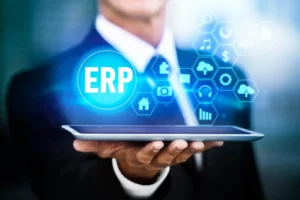Microsoft Dynamics 365 for Finance and Operations
Successful E-Commerce Starts With Your ERPCustomer-specific pricing, Shipping details & Account history. All the data you need for expert personalization is already at your disposal in your ERP. Integrated E-Commerce Software for B2B and B2C. Get on the fastest path to happier clients, smarter sales and better business partnerships. Today, organizations are looking to go to market quickly with a solution that enables them to create highly targeted, relevant and exciting customer experiences across all touchpoints. They are looking for fully functional omni-channel commerce solutions that they can deploy in the cloud in order to lower costs – not having to set up an extensive IT infrastructure and maintenance or train an operational team to support it – and be able to focus on their core business. Also, organizations are looking for a flexible, but at the same time highly scalable, solution that can grow with them and is able to support the highest traffic peaks without any challenge. Create Personalized, Relevant, and Omnichannel Commerce Experiences Give a consistent customer experience across all channels – from mobile, social, and chat to contact center and in-store. Support data-driven customization, cost-effective order management and fulfillment, and real-time inventory management. Trident’s Solution Built on Microsoft Dynamics 365 & Microsoft Dynamics Navision drives digital transformation and enables you to become an omnichannel business, delivering contextual customer experiences and unifying customer processes. We help you integrate all digital and physical customer touchpoints onto a single, robust platform – including online, mobile, point-of-sale, call center, social media and print – empowering you to deliver exceptional, seamless customer experiences, in any industry, anywhere in the world. Rich Multimedia Product Catalogue Showcase your products, categories and brands in their best light with various multimedia features and multilingual content. Use text, videos, multiple pictures, zoom, file downloads, links and more to best describe your products. Organize all this information using as many description tabs as necessary to streamline navigation for your customers. Order Processing Manage Multiple Online Stores through one Order Management Interface and instantly able to pick , pack and ship in Microsoft Dynamics AX / 365 / NAV Find Orders (by email, customer name, customer address, zip code) View Order History & Multiple Order Status (New, Being Processed, Fraud, Hold, Complete, Cancelled) Omni-Channel Fulfilment One system takes care of your customers’ orders across all channels. They get a fast, secure experience that allows them to choose between collection or delivery and benefit from fuss-free returns. You get to see all the order information in one place and have precise visibility of your stock. Cross-channel scenarios, such as buy online and pickup in store, also add to heightened customer convenience and satisfaction. Responsive Web Design Reach customers on all devices with an online store that automatically understands which device the shopper is using and adapts its design and resolution to the size of that screen. Responsive Web design is the approach that suggests that design and development should respond based on screen size, platform and orientation. Search Engine Optimisation Native search engine functionality improves search engine optimization for your web store by using SEO URLs, SEO product pages, landing pages, page tagging, alternate tags, detailed product content, product reviews, and integration with Google Analytics. Rich Customer Profiling Track customer buying patterns, communications with your brand, service history, and complaint management in one central location that displays loyalty balances and enrolment information, awards, and preferences. B2B and B2C Functionality Serve B2B and B2C customers with customer-specific pricing, on account and purchase order-based orders, multiple users per customer account, customer segmentation, and customer, address, and order imports from other third-party systems. Global Reach and Scalability Adapt quickly to changing purchasing trends and merchandising requirements as your business grows and adds distribution centers. Multi-language and multi-currency support enables operations across geographies and locations. Data Security Eliminate credit card fraud with encryption features certified by the PCI Security Standards Council. Data security is the practice of keeping data protected from corruption and unauthorized access. The focus behind data security is to ensure privacy while protecting personal or corporate data. UTSAVPEDIA – ECOMMERCE A Large e-commerce player in India significantly reduces OPEX and streamlines revenue recognition process with better automation. Trident Information Systems Works with a large E-Commerce Player of Indian Ethnic Wears to deploy Microsoft Dynamics ERP Navision View Case Study READY TO TAKE THE NEXT STEPS WITH TRIDENT’s E-COMMERCE SOLUTION Contact us today to schedule a quick chat about your project, or sign up for one of our monthly demos! Request For Demo
Microsoft Dynamics 365 for Finance and Operations Read More »







